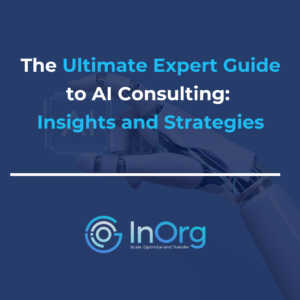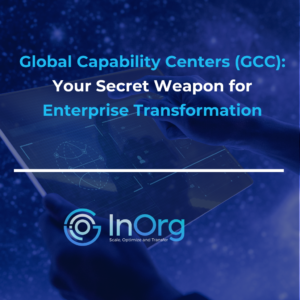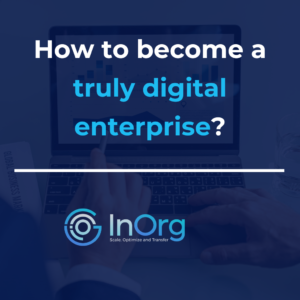On the corporate chessboard, where each piece plays a critical role in the game of leadership, the Chief Information Officer (CIO) has traditionally held the throne as the master of technology, commanding the vast and ever-changing kingdom of IT. However, with the tide of Artificial Intelligence (AI) sweeping through every sector, there’s a noticeable shift in the terrain.
CIOs are stepping out from behind the shadows of IT infrastructure to become visionaries of an AI-driven future. This emergence of AI isn’t just another blip on the tech radar—it’s a profound transformation. It’s pushing CIOs to evolve beyond their traditional roles, positioning them as key strategists leading their organizations into new realms of innovation and operational efficiency.
The Changing Role of CIOs
In the past, the main job of a CIO was pretty clear-cut: keep the IT ship sailing smoothly, ensuring that the digital backbone of the company didn’t falter. However, with the advent of AI and data analytics stepping into the spotlight, the role of CIOs is transforming dramatically. They’re no longer just the guardians of IT infrastructure; they’re now the conductors of a complex orchestra made up of data and algorithms, all playing together to generate value.
This evolution requires CIOs to arm themselves with a fresh arsenal of skills. Mastery over data science, machine learning, and artificial intelligence has become crucial. They must know how to harness these cutting-edge technologies to mine insights, streamline operations, and bolster decision-making processes. Moreover, CIOs are tasked with an essential bridging role: they must translate the intricate language of technology into clear, impactful messages that resonate across the entire business landscape, connecting with other leaders in a meaningful way.
Talent Sourcing for AI
Bringing AI to life within a company isn’t a solo performance; it’s a group effort that demands a diverse cast of skilled individuals, from data scientists and AI engineers to business-savvy experts. As the role of CIOs changes, their task of finding and cultivating this talent becomes increasingly important. CIOs are at the heart of assembling the dream team, nurturing an environment ripe for learning and innovation, and making sure the crew is well-equipped with the necessary tools and resources. Moreover, they’re tasked with making their company a magnet for the best AI minds out there, which is no small feat in the fiercely competitive landscape of today’s job market. Learn more about how AI talent can be the missing puzzle piece in your IT team here.
AI and the CIO’s Strategic Impact
With AI, IoT, and robotics shaking up the business world, the crucial influence of the CIO is clearer than ever. It’s not just about altering operations; these technologies are rewriting the fundamental rules of how businesses function.
Against this backdrop, CIOs have evolved far beyond their traditional roles. They’re not just facilitating tech anymore; they’ve stepped up as strategic consultants, drivers of innovation, and agents of change. Their role is key in defining the strategic path of their companies, spotting innovative opportunities, and leading the push towards a digital overhaul.
What Leading CIOs Are Doing in Their AI Journey:
- Strategic Planning: Crafting detailed AI roadmaps aligned with business objectives.
- Skill Enhancement: Investing in training and recruiting to build capable AI teams.
- Early Adoption: Leading CIOs test AI applications through pilot projects to ensure they meet business needs.
- Data Governance: Implementing strict guidelines for data management to maintain security and privacy.
- Cultural Transformation: Actively promoting a supportive culture for AI integration within their organizations.
- Continuous Learning: Staying updated on AI advancements and adapting strategies accordingly.
By focusing on these areas, CIOs can position themselves as leaders in AI adoption, effectively harnessing AI’s capabilities to drive business growth and innovation.
Are you leading or lagging in AI Adoption? Key Differences and Actions
| Points | Leading CIOs | Lagging CIOs |
| Understanding AI Capabilities | Regularly update their knowledge on new AI technologies and their potential impacts. They participate in continuous learning and industry conferences. | May have a basic understanding of AI but lack depth in the latest advancements and applications. |
| Strategic Integration of AI | Integrate AI strategies directly with business objectives, ensuring AI initiatives align with overall company goals and drive significant value. | Treat AI as a standalone project without integrating it into broader business strategies. |
| Investment in AI Research and Development | Allocate substantial resources to AI research and pilot projects to stay ahead of the curve. | Hesitant to invest in AI beyond minimal necessary upgrades, often due to budget constraints or risk aversion. |
| Collaboration with AI Experts and Partners | Foster strong partnerships with AI technology providers, academia, and industry experts to leverage external expertise. | Limited engagement with external AI communities, which may hinder access to innovative ideas and technologies. |
| Talent Management in AI | Actively recruit AI talent and invest in training their teams to develop AI skills across the organization. | Often face skill gaps in AI within their teams and do not prioritize upskilling or hiring specialized talent. |
| Adoption of Ethical AI Practices | Implement robust frameworks to ensure AI ethics and governance are maintained, addressing concerns such as bias, transparency, and accountability. | May overlook the importance of ethical considerations in AI, risking compliance and reputational issues. |
| Measuring ROI from AI Projects | Employ clear metrics and KPIs to track the effectiveness and impact of AI projects on business performance. | Lack of a systematic approach to measuring the success of AI initiatives, making it difficult to justify future investments. |
Steps for CIOs to ensure they do not lag behind:
- Stay informed on the latest AI trends and their implications for your industry.
- Develop a strategic AI roadmap aligned with your business goals.
- Invest in AI skills development for your team.
- Build partnerships with AI leaders and innovators.
- Implement an ethical AI framework and governance model.
- Regularly review and adjust AI strategies based on performance metrics and ROI analysis.
By focusing on these aspects, CIOs can better determine where they stand in their AI journey and take proactive steps to lead rather than lag behind in the AI revolution.
Conclusion
Navigating the twists and turns of digital transformation, it’s evident that AI isn’t just another piece on the board, it’s reshaping the entire game. For CIOs, this isn’t cause for concern; it’s an invitation to redefine their purpose and value. As architects of a future powered by AI, they wield the influence to craft strategies, foster innovation, and drive their organizations towards a new era of data-driven success.
But this journey is far from over. As AI continues to evolve, so too will the role of the CIO. Are you prepared to embrace this evolution? Remember, the future isn’t a destination; it’s an ongoing voyage, and for CIOs, it promises to be both challenging and exhilarating. In the realm of digital transformation, those who dare to rewrite the rules are the ones who emerge as leaders. Discover how to prepare for this exciting future at www.inorg.com.





